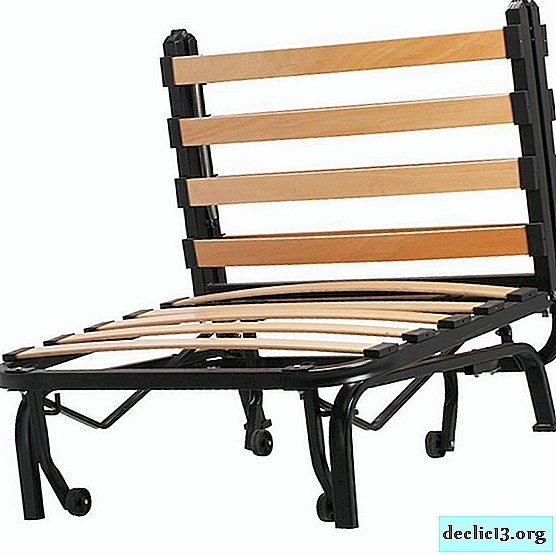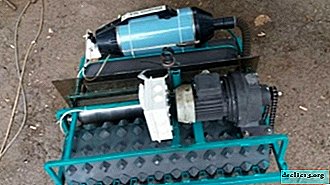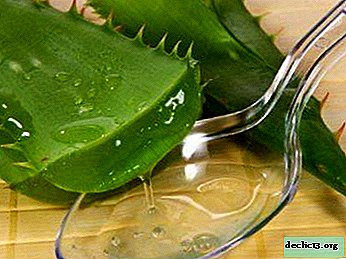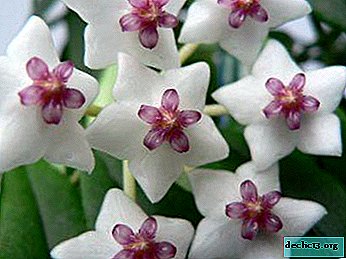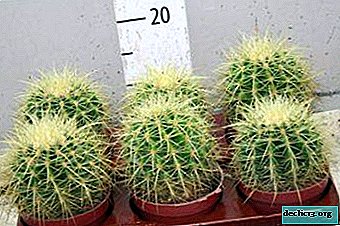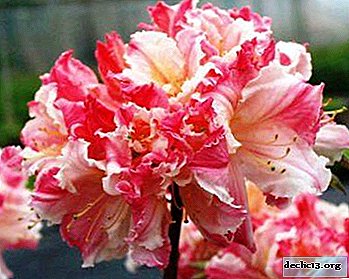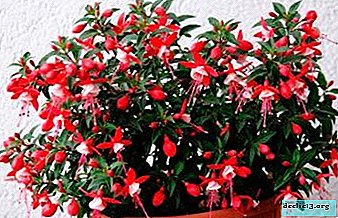Planting radishes in the spring in a greenhouse with and without heating and further care for the vegetable
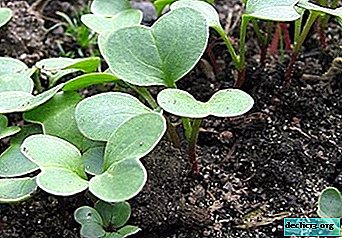
Radish is a vegetable that is used in food due to its sharp, peculiar taste, the presence of certain B vitamins, minerals: calcium, magnesium, iron, phosphorus and others.
This plant, when taken, improves complexion, lowers cholesterol and is an immunostimulant.
It activates the metabolism, increases the elasticity of the walls of blood vessels and has a number of properties useful to humans, so its cultivation with the departure of winter is necessary.
Features of sowing radishes in spring
When planting in the spring, it is necessary to pay attention to the seedlings, preparation of the land, varieties of seeds. The culture is cold-resistant, but at low temperatures, seedlings appear for a long time. The end of March and the beginning of April, when the sun warms the earth and air, is the time for sowing. The soil is prepared in the fall. It should be fertile, therefore, they dig it with humus, compost, with clay - with sand. Acceptable soils are friable, light with a neutral or weak level of acidity.
Fresh manure should not be added to the soil.In the spring, the earth is loosened with a Fokine plane cutter, leveled with a rake. Watered with warm water if it is dry, and dried if wet. Select early seed varieties for planting and plant several times a season, increasing the amount of yield.
The difference in the procedure at other times of the year
 The difference between planting is the choice of seeds, methods and time of planting in different climatic zones, caring for the plant at different times of the year. When planting radishes, attention is paid to the variety:
The difference between planting is the choice of seeds, methods and time of planting in different climatic zones, caring for the plant at different times of the year. When planting radishes, attention is paid to the variety:
- For spring, we select early varieties - these are French breakfast, Heat, Dungansky and others.
- In summer, the varieties Lydia, Pharaoh, Sora and others sit with the use of a darkened shelter after dinner.
- For winter they sow at the end of November - the beginning of December varieties Zhara, Zarya, taking into account that there is no germination and freezing. To do this, in the prepared beds, put the seeds in the grooves, cover them with two-layer warm soil, grass with a thickness of five and leaves with a layer of twenty centimeters.
The complexity of work in the spring is lower than in other seasons.
Why are they planting more often during this period?
After winter, the desire to eat fresh vegetables and fruits escalates. Radish - an early cold-resistant vegetable. It is grown all year round, but spring is the preferred time of the year, as planting is less time-consuming and it grows in natural conditions. It has a short daylight hours and acceptable air temperature. When the day increases and the temperature rises, the plant enters the breeding phase: a color and an arrow appear.
At a temperature of 0-10 degrees Celsius, seeds hatch slowly, and seedlings appear on 7-14 days, from 10-15 - seeds grow 4-7 days, from 15-20 degrees - 3-4 days.When exactly to plant in Siberia, the Urals and in the middle lane?
- In Siberia. We plant early varieties of radish in the area in March-April. We also take into account that the landing time depends on the warming up of the soil and on what the winter was like.
- In the Urals We adhere to the general recommendations for growing seeds. We have been sowing since mid-April, we additionally cover the landing with foil.
- In the Middle Strip of Russia planting of culture last March to the end of May. It is advisable to carry out the first planting by region in March and April in a greenhouse.
What is the difference in planting in a greenhouse?
At the beginning and end of the spring season
 The difference is in their number and in the adoption of lighting measures. Greenhouse early planting is acceptable for this plant, since it is possible to make several plantings of seeds in two weeks and get more yield than in late. With a large number of cloudy days in early spring, the plant stretches, root crops become smaller. To avoid dimming, additional lighting is needed. With a late landing, it is not required.
The difference is in their number and in the adoption of lighting measures. Greenhouse early planting is acceptable for this plant, since it is possible to make several plantings of seeds in two weeks and get more yield than in late. With a large number of cloudy days in early spring, the plant stretches, root crops become smaller. To avoid dimming, additional lighting is needed. With a late landing, it is not required.
To a building with and without heating
Planting in a greenhouse protects plants from the withering winds and frosts in early spring. In the presence of a skeleton, film, the soil warms up fasterbut, if the beds are prepared in the fall, waiting for their full thawing is necessary. If there is heating, lighting, ventilation in the greenhouse, it is possible to grow a useful product: root crops and leaves, year-round and in different climatic zones.
In this case, the cassette method of growing radishes is used. Planting in a polycarbonate greenhouse is carried out in March at a temperature of 15-18 degrees during the day and night 8-10, at the end of March - under the film. In the Urals, when planting in unheated greenhouses in early spring, additional cover with a film is necessary. It is removed when seedlings appear before the first leaves appear to lower the temperature.
Features of the procedure
Which grade to choose and why?
- Variety French breakfast - early ripening, from germination to maturation no more than 20-25 days pass, bright red color.
- Early red - ripens in 27-30 days, does not give shooters, large root crops, dark red in color, with a juicy core.
- Sora - the fruits are large, dense, juicy, the variety is resistant to disease, fruitful.
Where and for how much can I buy seeds?
Seeds can be bought at a price of 54.99 rubles in stores in St. Petersburg, 53.40 - in Moscow.
How to prepare seeds for sowing?

- We select those that are larger, for which we sift through a sieve with holes two millimeters.
- Then we determine the viability: in the solution of 10 grams of salt and 200 grams of water we lay the seeds, stand for 2 minutes, mix, pour the water with the pop-up seeds, rinse the remaining ones under the running water.
- We disinfect in a solution of potassium permanganate of a dark pink color: lower the seeds into it in a bag of gauze for 20-30 minutes, rinse in water or in a solution of phytosporin - a bio-fungicidal agent. We use a solution of phytosporin to combat diseases of powdery mildew, black, gray, wet rot, bacteriosis and others. Use phytosporin in accordance with the instructions for its use on the package of funds.
- It is possible to harden the seeds: wrap them in gauze, leave for a day at room temperature, then put in the refrigerator for a day, repeat and sow in moist soil.
Description of the process itself
- Radishes planted in rows in grooves. We make them 1-3 centimeters deep, the distance between the rows is 10-15 centimeters, water and spread the seeds at a distance of 1-2 centimeters from each other.
- The second method of planting using egg cartridges. We level the bed, water it, wait until the water dries. Then we press on the cassette, in the formed cells we lay the seeds and cover with humus. The cassette must be in two rows, between the second and third row - the distance for weeding with a chopper.
Features of proper cultivation
 Consider how to grow a radish after planting. This plant is hygrophilous, it is necessary to water it after 2-3 days with a strait of land, so that it becomes soft by 5 centimeters. If moisture is not enough, the roots coarsen, lose their taste, and become much less. In the greenhouse, air humidity also plays a role: in dry air, the radish becomes not tasty, flabby. To access oxygen to the roots, we loosen the soil, remove weeds so that there are no obstacles to growth.
Consider how to grow a radish after planting. This plant is hygrophilous, it is necessary to water it after 2-3 days with a strait of land, so that it becomes soft by 5 centimeters. If moisture is not enough, the roots coarsen, lose their taste, and become much less. In the greenhouse, air humidity also plays a role: in dry air, the radish becomes not tasty, flabby. To access oxygen to the roots, we loosen the soil, remove weeds so that there are no obstacles to growth.
It is necessary to observe the temperature regime after planting: 16-18 degrees, after mass shoots of the day four: 6-8, then 15-20, at night - 8-10. The soil before planting, after planting for disinfection, spill phytosporin 3-4 grams of powder per 10 liters of water per 1 square meter, then spray once every 10-14 days for the prevention of diseases, also taking into account the dose.
The vegetative period of the radish is small, so when applying fertilizer this will be enough. If you don’t make it, we use nitrogen fertilizers, mullein or chicken droppings 15-20 grams per 10 liters of water.
Nitrogen fertilizers can not be used in large doses, since their excess leads to an increase in green mass. It is possible to fertilize with an ash solution twice: 100 grams of ash per 10 liters of water, insisted during the day, both for nutrition and against the cruciferous flea, scaring it away from the leaves of the plant. The pest is dangerous in calm weather.The collection of plants is possible in two, three stages. Two hours before harvesting to water so that when pulling out there are no difficulties, clean from tops, shorten the tip - there will be no lethargy and can be stored in plastic bags in the refrigerator for several days in small sizes.
Grow with pleasure and use healthy radish root vegetables and lettuce, young leaves in tea!

